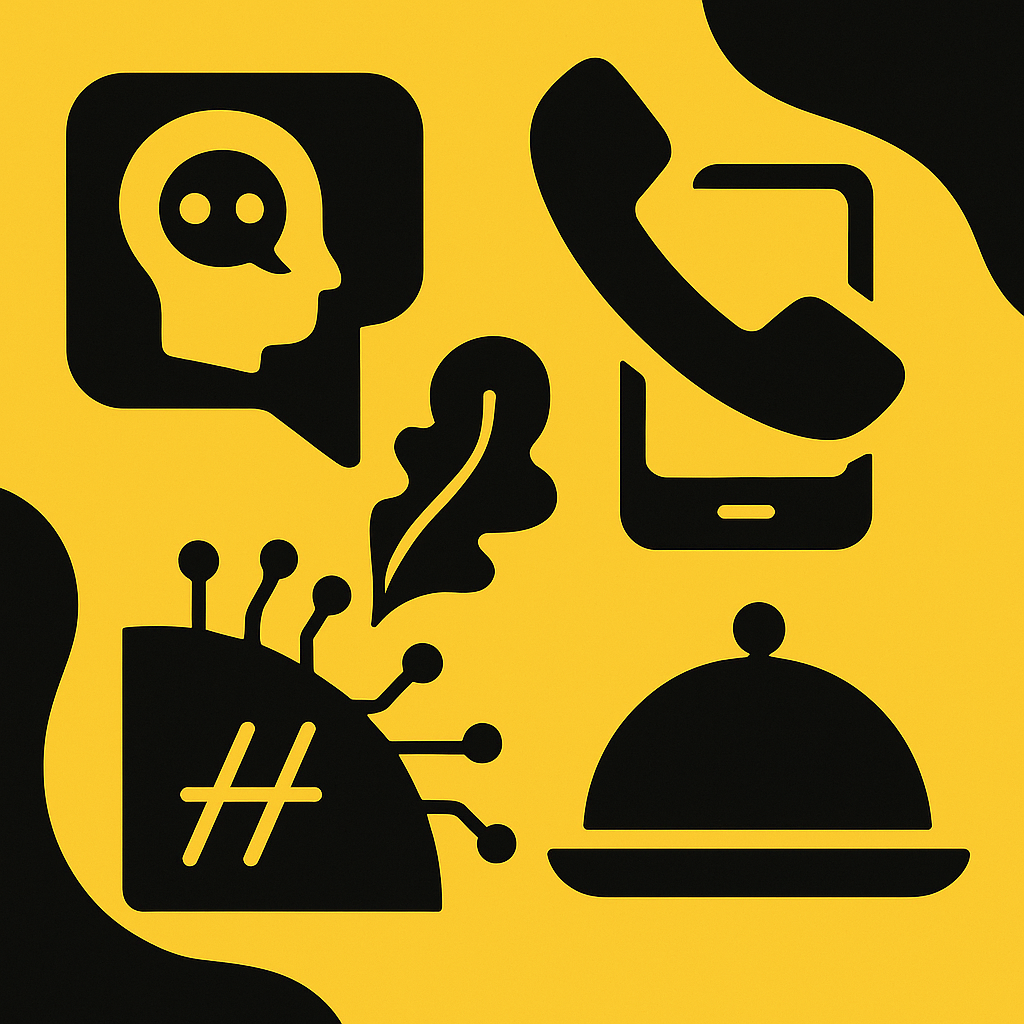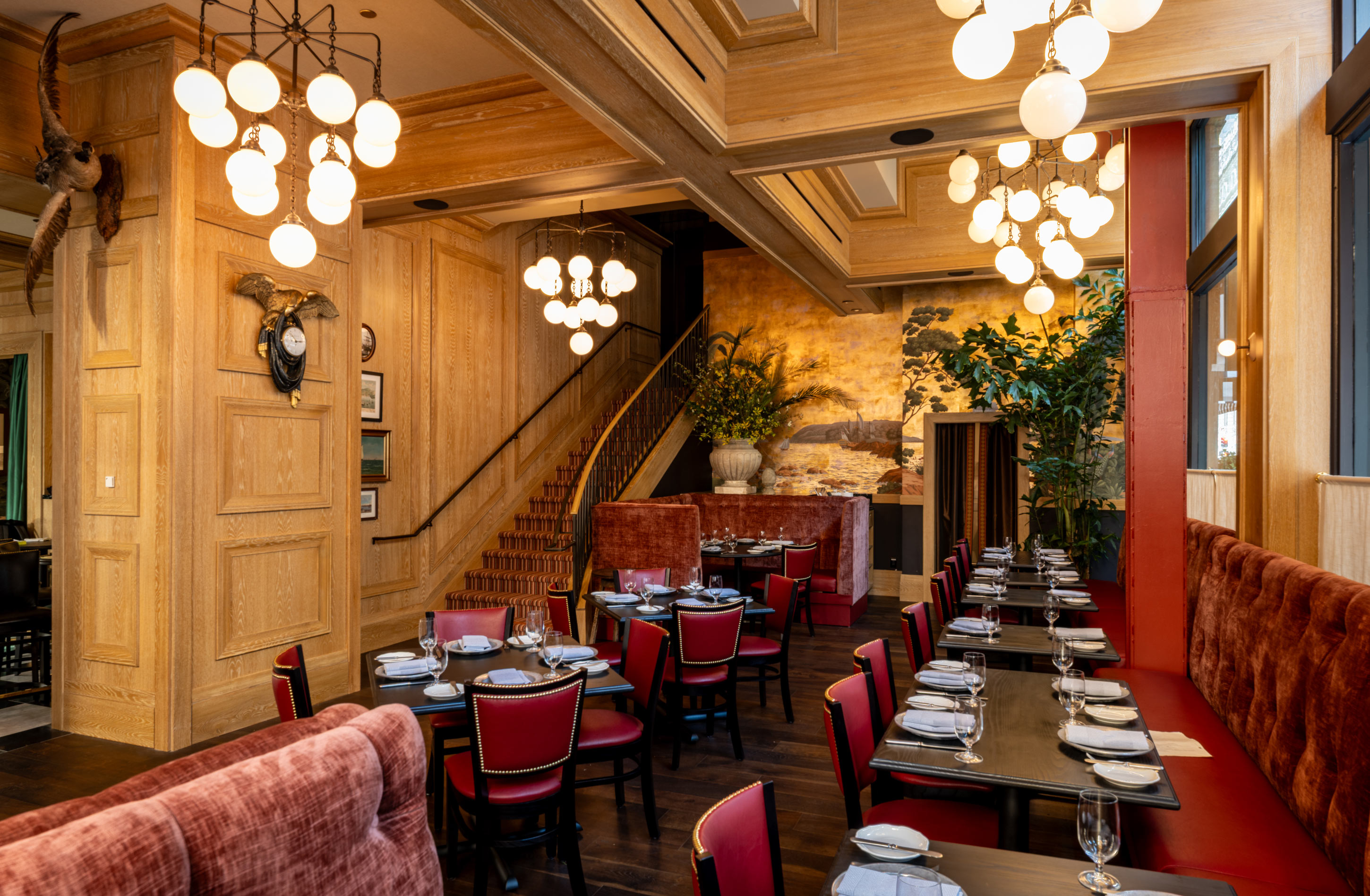
Managing phone calls across multiple restaurant locations has become increasingly complex in 2025. With over two-thirds of Americans willing to abandon restaurants that don't answer their phones, the stakes have never been higher (Hostie AI). The solution? Integrating an AI phone host like Hostie with your existing reservation and POS systems to create a seamless, automated guest experience.
This comprehensive guide walks you through the exact technical steps, timelines, and potential pitfalls when connecting an AI answering service to OpenTable for reservations, Toast for POS operations, and Olo for voice ordering across three or more locations. We'll map the API screens, show the proper order of operations, and include troubleshooting tips learned from real-world deployments. By the end, you'll have a complete checklist and timeline you can hand directly to your IT team.
Restaurant operators face a critical challenge: maintaining consistent customer service across multiple locations while managing labor costs. AI technology is transforming industries at an unprecedented pace, enhancing efficiency and driving innovation across various sectors including food organizations (RestoHost AI).
For restaurants specifically, AI platforms like Hostie handle calls, texts, emails, reservations, and order placements, integrating seamlessly with major reservation systems and leading POS systems (Hostie AI). The platform now handles over 80% of guest communications automatically for partner establishments such as Flour + Water and Slanted Door, with teams reporting growing customer satisfaction in the dining experience after integration.
Industry data reveals that 21% of calls in service industries go unanswered, and 70% of leads who don't get an answer move on to a competitor (Loman AI). More critically, leads are 9 times more likely to convert if they receive a response in less than 5 minutes. For multi-location restaurants, this translates to significant revenue loss when calls aren't handled efficiently.
Before beginning your AI phone host integration, ensure you have:
Hostie integrates directly with the tools you're already using, including existing reservation systems, POS systems, and even event planning software (Hostie AI). This means your current OpenTable reservations, Toast POS transactions, and Olo ordering system can work seamlessly with the AI host without requiring major system overhauls.
Log into OpenTable Partner Portal
Configure Hostie OpenTable Integration
The AI system needs to understand your reservation policies for each location:
Hostie can handle all kinds of requests, from simple reservation changes to complex private event inquiries and complicated order modifications (Hostie AI). This flexibility ensures your AI host can manage the nuanced reservation needs across different locations.
Before going live:
Timeline: 3-5 business days per location
Access Toast Developer Portal
Menu Synchronization
The integration ensures that when customers call with questions about menu items, pricing, or availability, the AI host has real-time access to your Toast POS data.
Real-time inventory sync prevents the AI from taking orders for unavailable items:
Timeline: 4-6 business days per location
Learning from SoundHound's Olo integration challenges, here are key considerations:
API Rate Limiting
Menu Mapping Precision
Hostie's AI, Jasmine, offers multilingual support in 20 languages, catering to both local and international guests (Hostie AI). For Olo integration:
Timeline: 5-7 business days per location
Design your call routing logic:
Incoming Call → Location Detection → AI Greeting → Intent Recognition
↓
Reservation Request → OpenTable Integration
↓
Food Order → Toast/Olo Integration
↓
General Inquiry → AI Response + Human Escalation Option
Ensure human backup is always available:
Timeline: 2-3 business days
Based on lessons learned from SoundHound deployments, follow this exact sequence:
Problem: Reservation times not syncing correctly
Solution: Verify timezone settings match between OpenTable and Hostie
Prevention: Test with reservations in different time zones during setup
Problem: Large party reservations failing
Solution: Check OpenTable API limits for party size
Prevention: Configure appropriate limits in Hostie settings
Problem: Menu items not updating in real-time
Solution: Increase sync frequency in integration settings
Prevention: Set up automated alerts for sync failures
Problem: Modifier combinations causing order errors
Solution: Map all possible combinations during initial setup
Prevention: Regular menu audits and testing
Problem: Voice recognition accuracy issues
Solution: Retrain AI with location-specific menu pronunciations
Prevention: Include phonetic spellings in menu data
Problem: Payment processing delays
Solution: Optimize API call sequences and implement caching
Prevention: Load testing during peak hours
Hostie starts at $199 per month per location (Hostie AI), with the StandardBasic plan designed for locations with a focus on walk-in service (Hostie AI). Here's how the economics work out:
| Metric | Before AI | With Hostie | Improvement |
|---|---|---|---|
| Call Containment Rate | 60% | 85% | +25% |
| Average Handle Time | 3.2 min | 1.8 min | -44% |
| Missed Calls | 15% | 3% | -80% |
| Labor Hours Saved | 0 | 12 hrs/month | 12 hrs |
| Additional Covers | 0 | 8/month | 8 covers |
| Monthly ROI | - | $340 | 71% ROI |
| Metric | Before AI | With Hostie | Improvement |
|---|---|---|---|
| Call Containment Rate | 65% | 88% | +23% |
| Average Handle Time | 3.0 min | 1.6 min | -47% |
| Missed Calls | 12% | 2% | -83% |
| Labor Hours Saved | 0 | 28 hrs/month | 28 hrs |
| Additional Covers | 0 | 22/month | 22 covers |
| Monthly ROI | - | $890 | 347% ROI |
| Metric | Before AI | With Hostie | Improvement |
|---|---|---|---|
| Call Containment Rate | 70% | 92% | +22% |
| Average Handle Time | 2.8 min | 1.4 min | -50% |
| Missed Calls | 8% | 1% | -88% |
| Labor Hours Saved | 0 | 95 hrs/month | 95 hrs |
| Additional Covers | 0 | 85/month | 85 covers |
| Monthly ROI | - | $3,200 | 1,508% ROI |
Assumptions: $15/hour labor cost, $35 average check, 70% conversion rate on recovered calls
Week 1: Management orientation
Week 2: Front-of-house training
Week 3: Kitchen staff orientation
Hostie was created by a restaurant owner and an AI engineer, Brendan Wood, ensuring the platform understands real restaurant operations (Hostie AI). This restaurant-first approach helps with staff adoption:
Track these metrics across all locations:
Hostie learns your restaurant and becomes your AI assistant, continuously improving its responses based on your specific operations (Hostie AI).
Technical Setup
Operational Readiness
Week 1: Foundation
├── Days 1-2: Credential gathering and access setup
├── Days 3-4: Hostie configuration and location mapping
└── Day 5: Initial system validation
Week 2: Core Integrations
├── Days 1-3: OpenTable integration and testing
└── Days 4-5: Toast POS integration and menu sync
Week 3: Advanced Features
├── Days 1-3: Olo voice ordering setup
└── Days 4-5: DNS routing and phone configuration
Week 4: Launch Preparation
├── Days 1-2: End-to-end system testing
├── Day 3: Staff training and soft launch
└── Days 4-5: Full deployment and monitoring
Hostie's multilingual capabilities support 20 languages (Hostie AI), making it ideal for diverse markets. Configure language detection based on:
For complex operations, create custom workflows:
Beyond the core three platforms, consider integrating:
Teams have reported growing customer satisfaction in the dining experience and customer service after integrating Hostie, with the platform handling over 80% of guest communications automatically for partner establishments.
Integrating an AI phone host across multiple restaurant locations requires careful planning, precise execution, and ongoing optimization. By following this playbook, you'll transform your phone operations from a labor-intensive challenge into a competitive advantage.
The key to success lies in the systematic approach: start with solid technical foundations, integrate one system at a time, train your staff thoroughly, and monitor performance continuously. With Hostie's restaurant-focused design and comprehensive integration capabilities, you're not just implementing technology—you're enhancing the hospitality experience that defines great restaurants (Hostie AI).
Remember, what originally started as a solution to help reduce operational tension has quickly grown into something much bigger: a way to ensure that conversations that would otherwise interrupt staff while they're greeting and seating guests can now be managed by an AI system that's easy to implement and delivers exceptional hospitality.
With proper implementation, your AI phone host will become an invisible but essential part of your restaurant's success, handling the routine so your team can focus on what matters most: creating memorable dining experiences for every guest who walks through your doors.
AI phone hosting integration eliminates missed calls, which is crucial since over two-thirds of Americans would abandon restaurants that don't answer their phones. The system automatically handles reservations through OpenTable, processes orders via Toast and Olo, and provides 24/7 multilingual support. This leads to increased revenue, reduced labor costs, and improved customer satisfaction across all locations.
Hostie's AI platform, powered by Jasmine, seamlessly integrates with major reservation systems like OpenTable and leading POS systems including Toast and Olo. The system can handle calls, texts, emails, reservations, and order placements in real-time. Jasmine supports 20 languages and can process customer requests instantly while syncing data across all integrated platforms.
Most restaurants see immediate benefits within the first month, with full ROI typically achieved within 3-6 months. The system reduces labor costs by eliminating the need for dedicated phone staff, increases order volume by capturing previously missed calls, and improves table turnover through efficient reservation management. Multi-location operators often see 15-25% revenue increases per location.
Yes, modern AI phone systems like Hostie can handle complex orders, dietary restrictions, and special requests through advanced natural language processing. The system learns from each interaction and can escalate complex situations to human staff when necessary. It maintains context throughout conversations and can process modifications, substitutions, and custom orders accurately.
Implementation typically requires API access to your existing POS and reservation systems, stable internet connectivity, and basic phone system integration. Most modern systems like Toast, Olo, and OpenTable offer standard API connections. The setup process usually takes 2-4 weeks and includes staff training, system testing, and gradual rollout across locations.
AI phone hosting offers 24/7 availability, instant response times, and perfect integration with restaurant systems, unlike traditional services that may have delays or human error. AI systems can handle multiple calls simultaneously, never get sick or take breaks, and provide consistent service quality. They also offer real-time analytics and can scale instantly during peak hours without additional staffing costs.
RELATED


